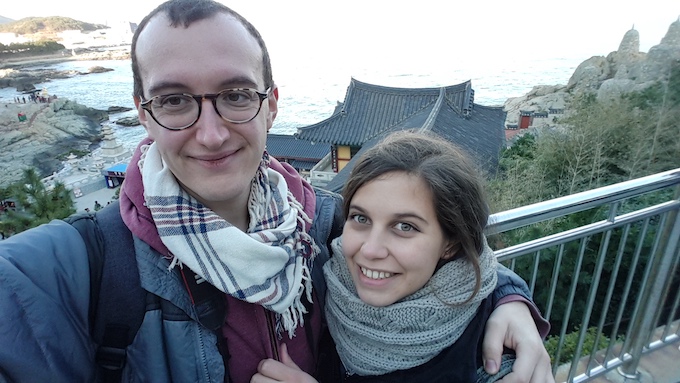Article • 5 min read
International relations 101: The keys to multilingual support success
By Kayla Schmidt, Zendesk Snapchat channel manager, @get_schmidty
Last updated September 15, 2020
“Querer é poder” is a Portuguese proverb that roughly translates to, “Where there’s a will, there’s a way.” It’s a phrase that Teresa Rosado-Sanna lives by in life and in her work at Zendesk, where she is a Spanish-speaking customer advocate.
Teresa, who is Portuguese, was undeterred by her self-described “decent” Spanish skills when she applied for the role—and that can-do attitude continues to pay off. She got the job in 2017 after demonstrating better-than-decent Spanish on the fly, and her global, nimble approach to customer support continues coming in handy in unexpected ways.
Teresa works closely with two other language advocates in Zendesk’s Madison, Wis. office. Together they manage tickets sent in by Portuguese-, Spanish- and English-speaking customers. Teresa’s trilingual abilities are deployed in several situations throughout the day, including flagging help center articles that require more localized translation, sending macros written in all three languages, or talking through issues with international customers who are more comfortable describing what they need in Spanish or Portuguese. Jumping from one language to the next, sometimes multiple times within the same support interaction, is one of her favorite aspects of her job, she says.
Although Teresa and her multilingual teammates do not manage incoming phone calls, she carefully monitors the ticket responses and arranges several callbacks each week with her customers. Often times, she spends more than an hour with each to talk them through an issue that is too difficult to explain in writing.
“If I see that we’re not getting anywhere on a ticket, it can be frustrating for everyone,” Teresa explains. “I would rather just sort things out on a phone call.”
This exact situation occurred recently, and Teresa arranged a call with a Spanish-speaking customer who was having trouble on an email ticket. After her sharp ears detected a familiar accent, she shifted from Spanish to Portuguese mid-phone call when the customer confirmed she was Brazilian.
“I don’t think it would be fair for me to say, ‘Well, sorry, tough luck,’ to someone who may not completely understand a help center article I send in a ticket, for example,” Teresa said. “So, I try my best to go that extra mile and help, set up a phone call and just go through it step by step with the customer to get everything sorted out.”
One of the biggest team advantages of multilingual support includes contributing to reduced ticket volume and ticket escalations, Teresa says. For example, in some cases, Teresa is able to work out questions in Tier 1 that would normally be escalated to Tier 2. Since there are fewer multilingual agents available in that tier to help, the result is a better experience for customers and agents alike when she can manage those tickets directly.
Teresa and her multilingual coworkers just recently received live chat training, something she has been looking forward to for some time. Now if the English chat queue starts to fill up, Teresa and her team can jump in to help customers, in addition to fostering the relationship between language and English advocates.
Thinking globally is a way of life for Teresa, who moved from Portugal to the U.K. when she was 16 years old. What was originally going to be a one-year trip turned into a seven-year one, when she decided to attend Lancaster University with a major in math. Her travel bug persisted over the next few years–she spent three months after graduation in South Korea volunteering at a language cafe, where people pay for the opportunity to practice a new language, play board games, and connect with the staff. She then moved to Japan to take a language course, which is where she met her husband. The pair traveled across Southeast Asia, Australia, and China before they traded hostel living for their own place in Madison, where her husband grew up. Keeping in touch with her friends all over the world has trained Teresa well for connecting with customers globally.

Teresa and her husband at a temple in Busan, South Korea
For anyone aspiring to a multi-language support role, Teresa advises having a passion for languages and learning new things. She also recommends taking advantage of the knowledge of teammates from day one, observing how fellow agents guide customers through issues and building on that expertise with every interaction.
Given the rave reviews the multilingual support team gets from others in the company, it looks like they’re doing something right.
“Other teams will sometimes say, ‘Our support team can do everything! They’re a magic team that solves all the problems. Just ask them to give you a call, and they will walk you through anything at any time.’” Teresa laughed.
Hear from more Zendesk advocates:
Zac Renault, on on why it’s okay to say, “I don’t know”
Abel Martin, on building great internal partnerships
Arthur Mori, on what everyone should know about Tier 1 support
Benjamin Towne, on mentoring and offering constructive criticism
Rodney Lewis, on setting up an internal shadowing program
Sarah Kay, on her move from advocate to data analyst
Ramona Lopez, on rolling out an advocate recognition program
Aurash Pourmand, on practicing customer empathy
Anna Lee Ledesma, on the skill every great chat agent needs to have
Mark Fado, on providing dedicated 1:1 client support
Justin Helley, on advocacy training and development
Guillaume Deleeuw, on problem-solving in Tier 2 technical support
The Tier 3 team, on bringing a hive mentality to work
Peachy Garcia, with best practices for handling chats
Jen Neuls, on the art of business analysis
Alex Popa, on how internal communication impacts customer relationships
